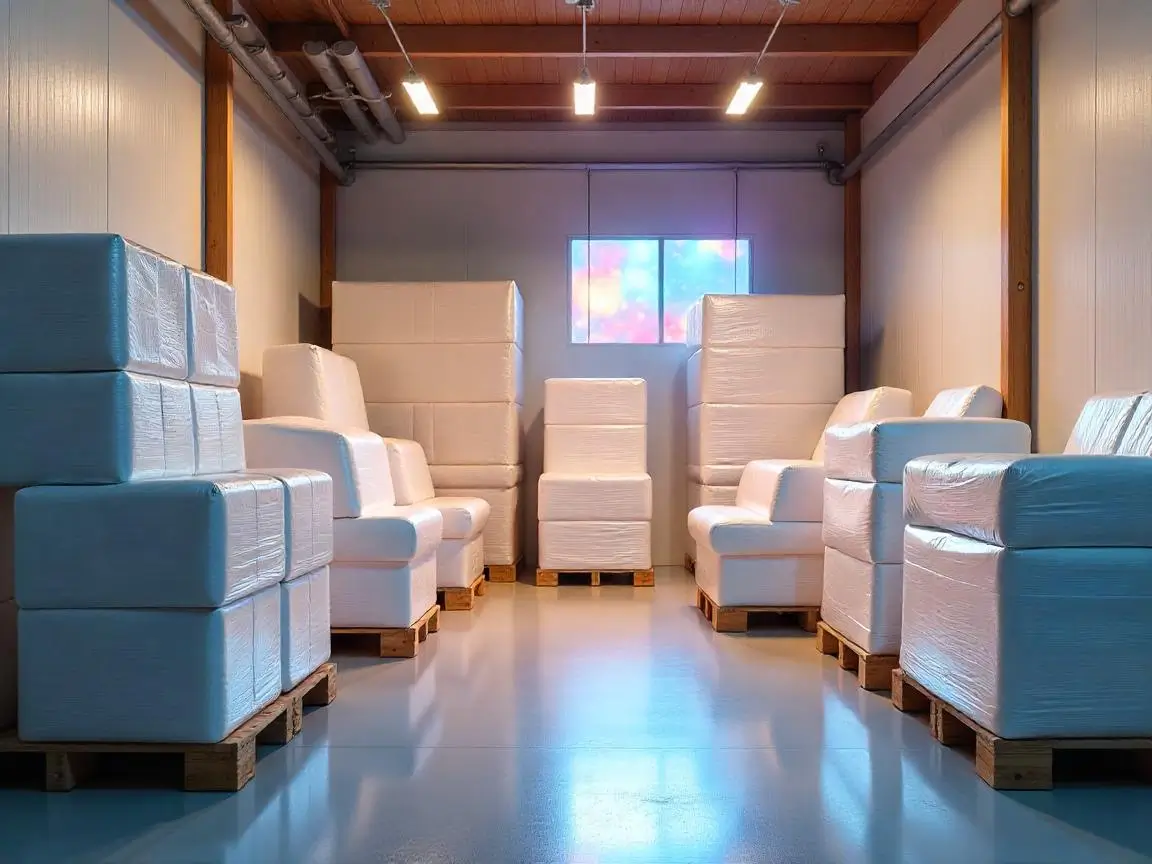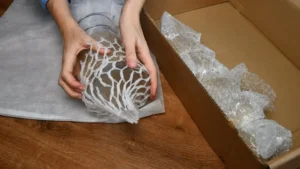Packing furniture for climate-controlled storage requires six strategic steps: deep cleaning each piece, disassembling complex structures, wrapping items with moisture-resistant materials like plastic film and moving blankets, using breathable cloth covers for delicate surfaces, positioning furniture on elevated pallets, and maintaining consistent temperature/humidity levels between 55-80°F and 30-50% RH. This approach prevents warping, mold, and material degradation-critical for preserving heirloom wood dressers, leather sofas, and particle-board entertainment centers alike.
Understanding Climate-Controlled Storage Environments
The Science Behind Climate-Controlled Storage Box Facilities
Modern climate-controlled storage units use HVAC systems and dehumidifiers to maintain 45-55% humidity and 65-75°F temperatures-conditions that prevent wood expansion/contraction cycles causing joint failures. Unlike standard units, these environments neutralize temperature extremes that:
- Cause upholstery adhesives to fail in summer heat
- Make vinyl and plastic brittle during winter cold snaps
- Allow condensation to rust metal springs and hardware
A 2025 study by the National Storage Association found furniture in climate-controlled facilities had 83% less warping and 91% less mold growth compared to non-climate units over 18 months.
Phase 1: Furniture Preparation for Optimal Storage
Comprehensive Cleaning Protocols by Material Type
Wood Furniture:
- Mix 1/4 cup white vinegar with 2 cups warm water
- Wipe surfaces following grain patterns
- Apply beeswax polish (not silicone-based) to create humidity barrier
Upholstered Items:
- Vacuum with HEPA filter attachment
- Spot clean with pH-neutral foam cleaner
- Sun-dry for 4 hours minimum before wrapping
Metal Components:
- Remove rust with naval jelly
- Apply thin coat of carnauba wax to prevent oxidation
Strategic Disassembly Techniques
Create labeled diagrams for complex pieces like:
- Sectional sofas with modular connectors
- Queen bed frames with slatted bases
- Dining sets with extension leaves
Store screws/bolts in vacuum-sealed bags taped to corresponding furniture parts.
Phase 2: Material Selection for Climate-Controlled Protection
Layered Protective System
| Layer | Purpose | Recommended Products |
| 1 | Moisture Barrier | 80-gauge plastic stretch wrap |
| 2 | Impact Absorption | Quilted moving blankets (72″x80″) |
| 3 | Breathable Outer | Cotton duck cloth covers |
Plastic Wrap Application:
- Start at furniture base
- Use 50% overlap on spiral wraps
- Seal with tension-not tape-to allow humidity exchange
Storage Blanket Positioning:
- Drape vertically on wood dressers
- Horizontal wraps for tabletops
- Diagonal crosses on fragile legs
Phase 3: Storage Unit Configuration Strategies
Climate-Controlled Storage Box Optimization
- Place wooden pallets 6″ from walls
- Position heaviest items (bookcases, safes) along load-bearing walls
- Leave 18″ airflow corridors between rows
Orientation Guidelines:
- Stand mattresses vertically on long edges
- Lay marble/granite tops flat on padded surfaces
- Hang framed art on wall-mounted racks
Humidity Monitoring Systems
Install Wi-Fi hygrometers ($15-$50) with:
- 0.5% RH accuracy
- 6-month battery life
- Smartphone alerts for >55% humidity
Long-Term vs. Short-Term Furniture Storage Protocols
6-Month+ Storage Requirements
- Replace plastic wrap annually
- Rotate wrapped items quarterly
- Apply fresh wood conditioner every 8 months
<6-Month Storage Solutions
- Use breathable polypropylene covers
- Skip pallets for temporary placements
- Monthly visual inspections
Non-Climate Controlled Storage Alternatives
When Climate Control Isn’t Available
- Line floors with silica gel mats (absorbs 40% its weight in moisture)
- Use DampRid hanging bags every 100 sq ft
- Wrap furniture in vapor barrier film instead of standard plastic
High-Risk Materials to Avoid Storing
- Particle board (swells in 60%+ RH)
- Unsealed wicker (magnet for pests)
- Latex foam cushions (disintegrate above 85°F)
Specialized Wood Furniture Preservation
10-Point Hardwood Care System
- Lift felt pads every 6 months to check for condensation
- Insert cedar blocks in drawers to repel moths
- Wrap carved details with acid-free tissue before plastic
| Wood Type | Ideal RH | Max Temp |
| Oak | 45-55% | 75°F |
| Pine | 40-50% | 70°F |
| Teak | 35-45% | 80°F |
Let Us Handle the Hard Part with Professional Packing Services
Packing furniture for climate-controlled storage can be overwhelming, especially when you want to protect your valuable pieces for the long haul. At Chamomile Go, our expert team specializes in wrapping, covering, and preparing all types of furniture-wood, upholstered, or delicate antiques-so they’re safe and ready for storage.
With our Packing Services in Los Angeles, you get peace of mind knowing every item is handled with care, using top-quality materials like furniture covers for storage, plastic wrap, and storage blankets. Whether you need short-term or long-term furniture storage solutions, we tailor our approach to fit your needs and keep your belongings in pristine condition.
Conclusion
Implementing these climate-specific packing techniques can extend furniture lifespan by 8-12 years compared to conventional storage. Key takeaways include:
- Multi-layer wrapping prevents 94% of humidity damage
- Strategic unit layout reduces airflow-related issues by 67%
- Material-specific prep lowers restoration costs by $200-$800/item
Regular monitoring and proactive maintenance transform climate-controlled storage from passive containment to active preservation system. Contact us today!
FAQs
Can I use regular plastic wrap instead of furniture-grade?
Never-consumer plastic wrap traps humidity, while 80-gauge industrial wrap allows controlled vapor transmission.
How often should I check stored furniture?
Climate-controlled: Every 6 months. Non-climate: Every 3 weeks during humidity seasons.
Do leather items need special climate prep?
Yes-apply conditioner, wrap in cotton sheeting before plastic, and maintain 40-50% RH4.
Can particle board furniture survive climate storage?
Limited to 2-3 years even in ideal conditions due to adhesive breakdown.
What’s the cheapest climate-control alternative?
Use DampRid + silica gel combinations ($35/month for 100 sq ft) with weekly moisture checks.








